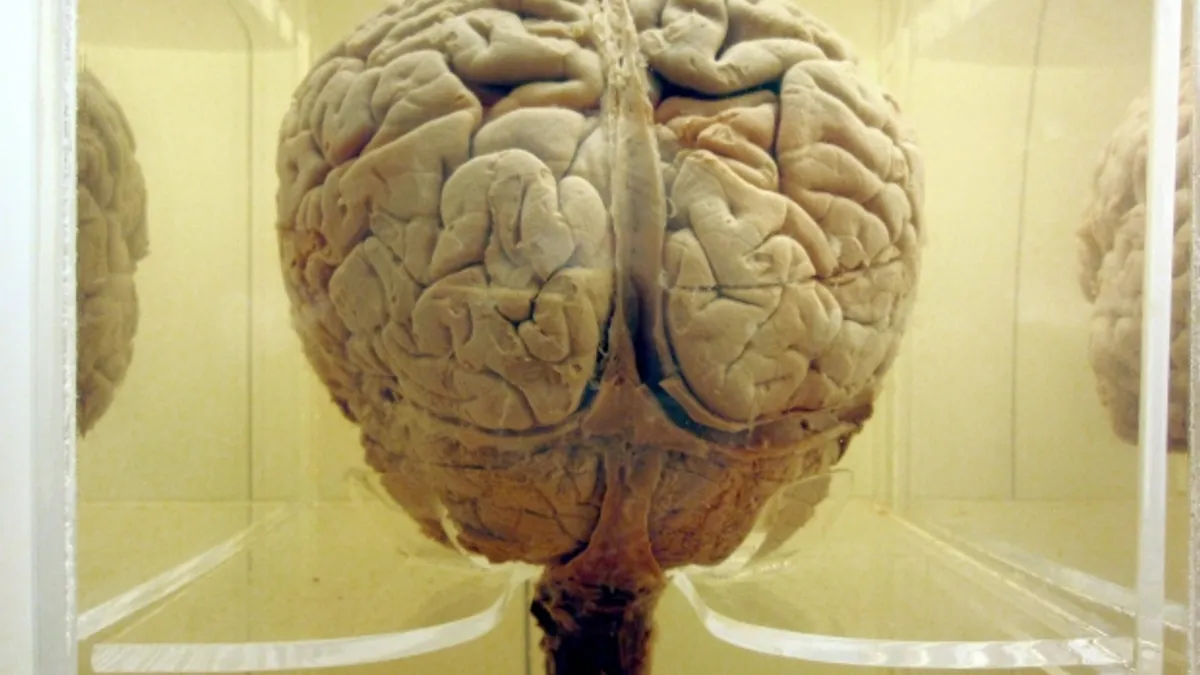Dive Brief:
- A study of ischemic stroke survivors implanted with a neurostimulator to increase blood flow to the brain has shown the treatment is likely to improve functional outcome in patients, although the results fell short of statistical significance.
- The research into the therapy, called active nerve cell cluster stimulation, was led by scientists at the University of California, Los Angeles (UCLA) and Tel Aviv University and published Friday in The Lancet.
- The study was funded by BrainsGate, a Caesarea, Israel-based medical device maker whose backers include Johnson & Johnson and Boston Scientific.
Dive Insight:
The device is temporarily implanted through the roof of the mouth eight to 24 hours after the onset of a cortical acute ischemic stroke. Electrical stimulation is delivered to nerve cells behind the nose to dilate undamaged arteries and send blood to the threatened region of the brain.
In the study, conducted at 73 centers in 18 countries, the device’s electrode stimulated the nerve cell cluster four hours a day for five straight days. The primary efficacy endpoint was the difference in disability improvement above expectations between patients who received the device and those who got sham stimulation after three months.
Although the results did not reach statistical significance, the researchers were encouraged by findings from a subset of 520 patients who had confirmed injury to the cerebral cortex. Favorable outcomes were seen in 50% of patients who got the stimulation, compared with 40% of those who received the sham treatment.
There were no differences in mortality or serious adverse events between the intervention group and the sham-control group. Preclinical studies also showed nerve cell cluster stimulation could stabilize the blood-brain barrier to prevent brain swelling, according to the Lancet article.
The study found an inverse U-shaped dose-response relationship between stimulation intensity and the primary outcome. The number of patients in the subgroup with favorable outcomes increased from 40% to 70% at low-midrange intensity and decreased to 40% at high intensity stimulation.
With stroke continuing to be a major cause of death and disability, new treatments are needed to complement existing therapies, Jeffrey Saver, director of the UCLA Comprehensive Stroke Center and a co-principal investigator of the study, said in a statement.
The first treatment for ischemic stroke is the drug alteplase, which works to dissolve the clot and clear the blocked artery. But its effectiveness diminishes if administered beyond three hours of the onset of stroke, and it does not work for all patients. Newer clot-retrieval devices are threaded through the arteries to remove blockages and can be used 24 hours after a stroke in some patients.
Future studies will look at the neurostimulator’s effectiveness when combined with clot-dissolving medications and clot-retrieving devices, according to UCLA.
BrainsGate's investors include Johnson & Johnson, Boston Scientific, Elron Electronics Industries, Pitango Venture Capital, Alice Ventures, Agate Medical Investments, Infinity Ventures and Cipio Partners.











